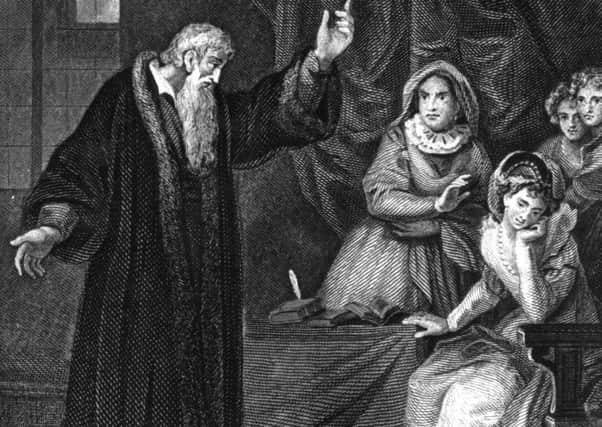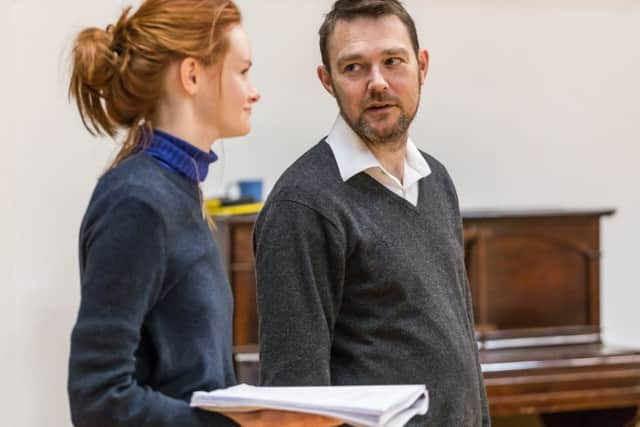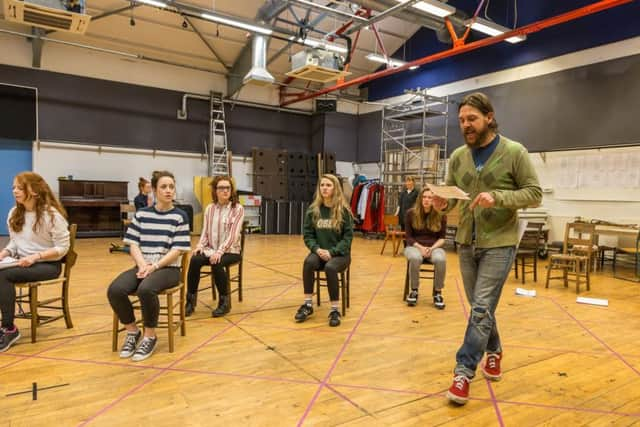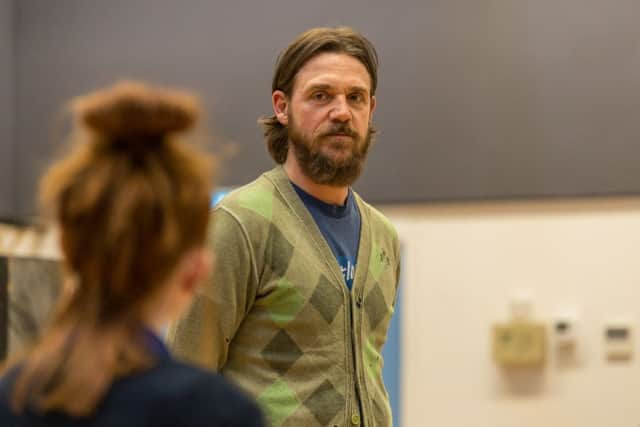Theatre preview: Behind the scenes at the Lyceum's Mary, Queen of Scots play


It’s 19 August, 1561 and Mary, Queen of Scots steps from a ship at Leith docks. She is 18 years old, arriving to claim the crown of a country she scarcely knows. A Catholic arriving in a land ablaze with new Protestantism, she does not yet know her enemies, but they know her, and are already poised to oppose her.
Two weeks later, at Holyrood Palace, Mary calls an audience with John Knox, the firebrand minister of St Giles and leader of Scotland’s reformation. It is the first of four such meetings between Queen and preacher over the next two years, when each is pitted against the other in an unequal power struggle. Each believes themselves appointed by God, and acting out of conscience, but their views are diametrically opposed.
Advertisement
Hide AdAdvertisement
Hide AdThe story of these meetings is told in Glory on Earth, Linda McLean’s new play, commissioned by David Greig for the Lyceum, who also directs. In it, two contrasting individuals – Europe’s most glamorous queen and its best-known religious radical – try to manage the conflicting forces which will shape Scotland for the next 400 years.


“In a room no bigger than this,” David Greig motions around the plush interior of the Lyceum dress circle bar, “these interviews are a smashing together of massive forces that send tides sweeping across the whole continent. Yet at the same time it is so intimate, just two individuals, two humans – and Linda has captured this so beautifully – a clever young woman and a powerful, clever and adamant older man.”
“It really shocked me, that she was so young,” says McLean, the author of award-winning plays such as Riddance, Shimmer and Any Given Day. The commission to write a new play about Mary Queen of Scots catapulted her into a year of intensive research. “I’m not a historian and didn’t know any of the background, but I wanted to explore it. I wasn’t aware that they were contemporaries, that they had such an effect on each other’s lives. Now, I could do Mastermind: 1561-1563 is my specialist period.”
Sitting in an early rehearsal, I get a sense of just how knowledgeable McLean has become as she goes through the nobility of Scotland, one at a time: who is married to whom, where their allegiances lie. Rona Morison (Mary) and the other actors, all female except for Jamie Sives (Knox), work together to pick out the “Mary lines” which rise from a chorus of voices. Many of the actors also play instruments and sing in Michael John McCarthy’s score.
Advertisement
Hide AdAdvertisement
Hide AdMcLean became intrigued by the fact that the only accounts we have of the meetings between Knox and Mary are from Knox’s hand. “He has written the script of those interviews, and he doesn’t simply detail what Mary says, he infers what she’s feeling and thinking. Anyone who writes either a John Knox or a Mary Queen of Scots biography has to use his version. That did allow me to be a bit creative in what she might be thinking and feeling as an 18-year-old girl, being lambasted by this trained theologian running verbal rings around her.”


David Greig adds: “The interesting thing that I think Linda has brought out so well is that, although Knox is running verbal rings around Mary, he’s not morally superior. She has a very solid core, a sense of what her duty is and what the right thing is, and she tries really hard to stick to that. She’s an 18-year-old girl but she’s not a fool, she’s not inconstant, she’s not all the things he suggests she is. I think the play is Mary’s howl of unsilencing. Knox is the nemesis she can’t get past, the thing she’s trying to understand. The play puts us in the position of her, trying to understand him.”
Humanising Knox was, McLean says, a challenge. “It’s impossible to write a play and not flesh out the characters that you’re dealing with. He was recently widowed, as Mary was, and when he was among his brethren, his own people, he could be quite warm. But at this time in his life, it’s hard to find any redeeming softness in him. He has decided to take Mary down.”
Back in Scotland following a self-imposed exile in Geneva, Knox had plans for Scotland, and he was not about to let a young Catholic queen disrupt them. He had viciously attacked the rule of women in a pamphlet three years before. In 1560, the Catholic Mass was outlawed in Scotland, and it was with bad grace that Knox allowed that it could be said for Mary in her private chapel at Holyrood. He denounced her from the pulpit and, following her imprisonment in 1567, called openly for her execution.
Advertisement
Hide AdAdvertisement
Hide AdGreig says the play is “a single act of empathetic imagination to take us back to the reality of this woman and this place and this time”. But there are also wider resonances. Every generation of theatre-makers finds in the story of Mary reflections of their own concerns. Greig says: “What I come back to is power and patriarchy and, in particular, implacable ideological opposition facing up against pragmatic, tolerant power. It’s a woman facing patriarchy, but also someone who believes that the world is comprehensible and if we all just rub along we might find a way through, coming up against someone who says: ‘No, there is a way that the world is, and my job is to make sure that I defend it’.


“I find I see that reflected in a lot of places – Americans trying to face the alt-right; liberal thinkers in Britain facing a sort of Knoxian Brexit. I think it’s about the universal experience of compromise versus implacability. Also, Mary is essentially trying to position Scotland somewhere between Europe and England. There is a pull towards both, and there are fierce factions on both sides. It’s interesting that this is still the geopolitics of this rocky outcrop today.”
For Glaswegian Linda McLean, the interest in the conflicting ideologies of the play is more personal. “When I was five years old, my best friend lived up the stairs from us, but on our first day at school we couldn’t go to the same school. The children in my school were calling the children in her school names and vice versa. What we’re having visited on us today comes, in a winding way, from these two people, in that time.”
David Greig has come to see Knox and Mary as two sides of the Scottish psyche. “I think this play is about the pull between our wish to be European and glamorous, and also a kind of liberal pragmatism, and the pull to work hard, keep our noses down, do the right thing, not get above ourselves. I think very few Scots can get through a day without a Knoxian thought. But for each push of Knox, you get a counter-push of Mary.
Advertisement
Hide AdAdvertisement
Hide Ad“Most Scots contain a mix of those two poles. It’s not part of the way I was brought up, but nevertheless I find those two forces swirling within me. I think this play is about the sense in which the Scottish psyche was formed at that moment. This battle is the battle that forged it.”
Glory on Earth is at the Royal Lyceum Theatre, Edinburgh, from 20 May until 10 June